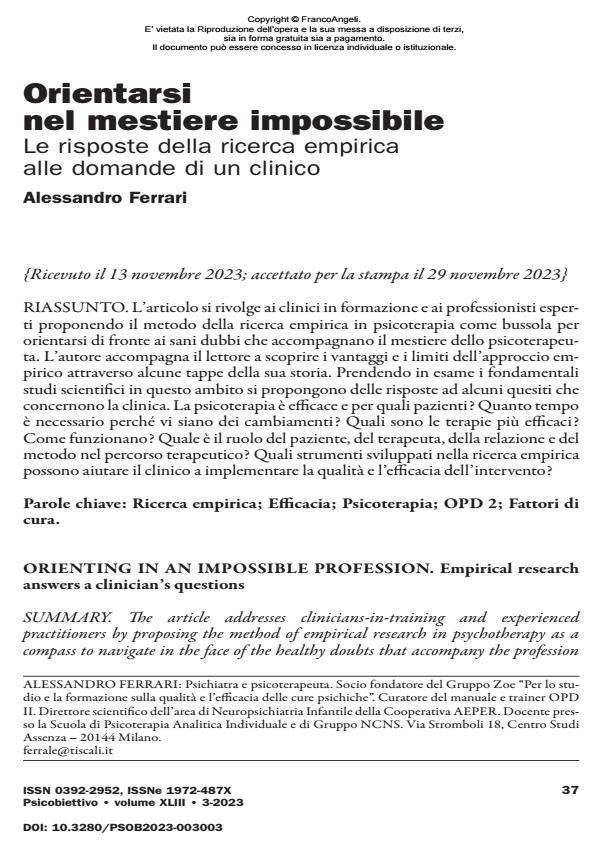Orienting in an impossible profession. Empirical research answers a clinician’s questions
Journal title PSICOBIETTIVO
Author/s Alessandro Ferrari
Publishing Year 2024 Issue 2023/3
Language Italian Pages 18 P. 37-54 File size 773 KB
DOI 10.3280/PSOB2023-003003
DOI is like a bar code for intellectual property: to have more infomation
click here
Below, you can see the article first page
If you want to buy this article in PDF format, you can do it, following the instructions to buy download credits

FrancoAngeli is member of Publishers International Linking Association, Inc (PILA), a not-for-profit association which run the CrossRef service enabling links to and from online scholarly content.
The article addresses clinicians-in-training and experienced practitioners by proposing the method of empirical research in psychotherapy as a compass to navigate in the face of the healthy doubts that accompany the profession of psychotherapy. The author takes the reader through some of the milestones in the history of the empirical approach to discover its advantages and limitations. Reviewing the fundamental scientific studies in this area, answers to some questions concerning the clinic are proposed. Is psychotherapy effective and for which patients? How long is it necessary for changes to occur? Which therapies are most effective? How do they work? What is the role of the patient, therapist, relationship, and method in the therapeutic process? What tools developed in empirical research can help the clinician implement the quality and effectiveness of the intervention?
Keywords: Empirical research; Efficacy; Psychotherapy; OPD 2; Treatment factors.
Alessandro Ferrari, Orientarsi nel mestiere impossibile Le risposte della ricerca empirica alle domande di un clinico in "PSICOBIETTIVO" 3/2023, pp 37-54, DOI: 10.3280/PSOB2023-003003